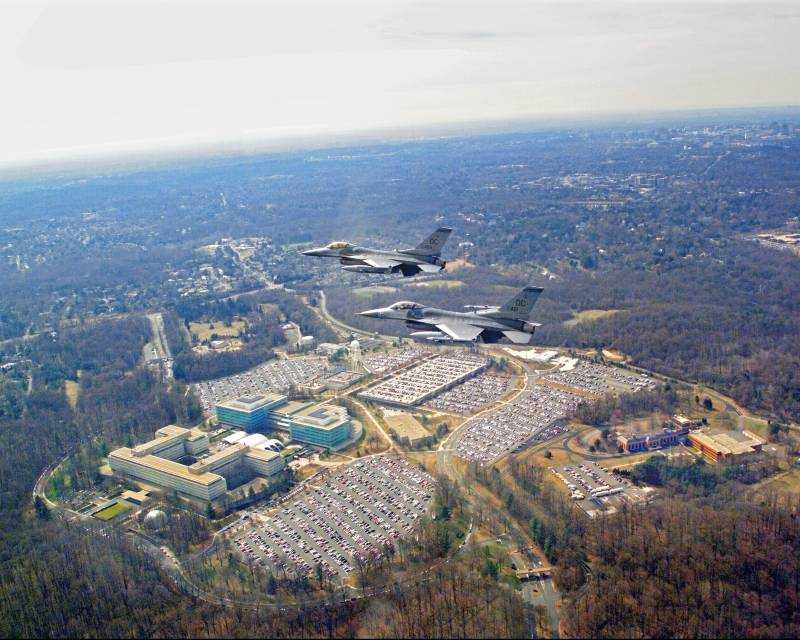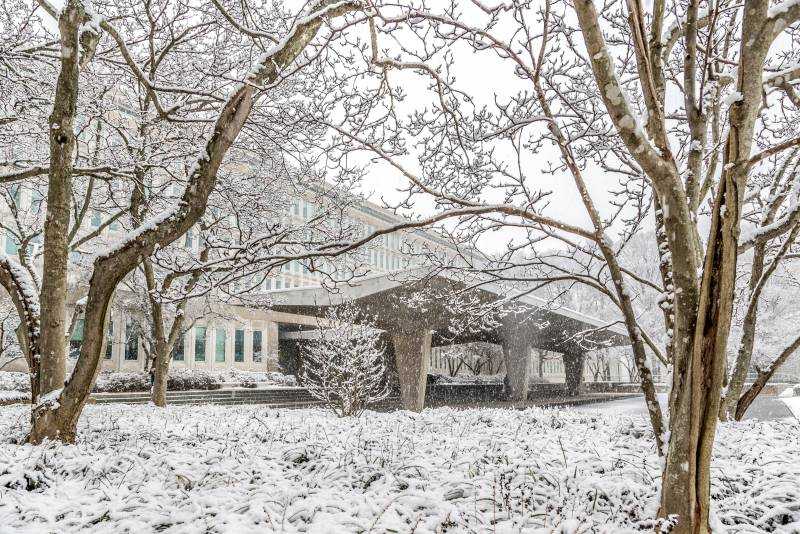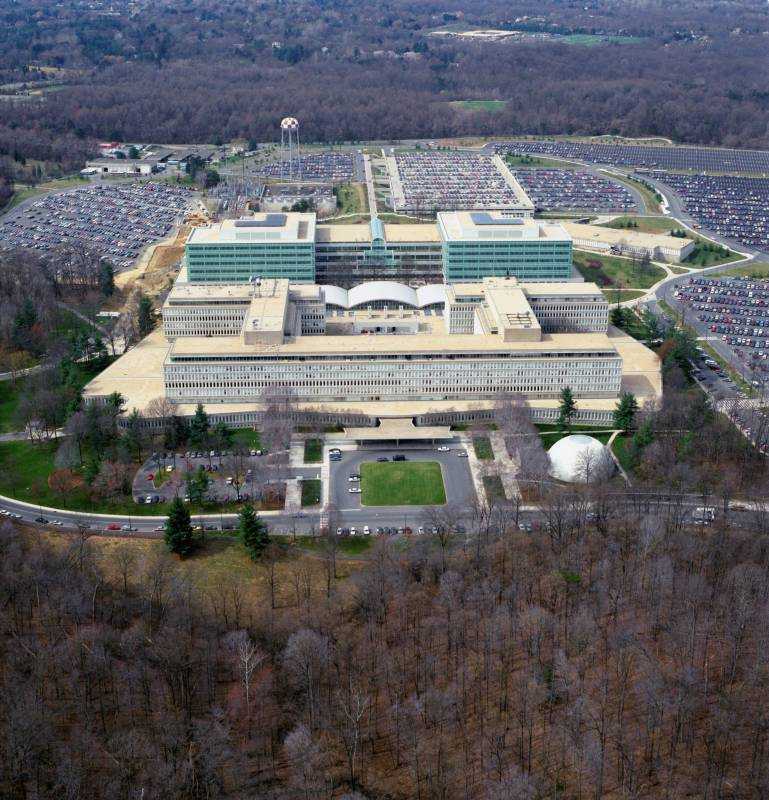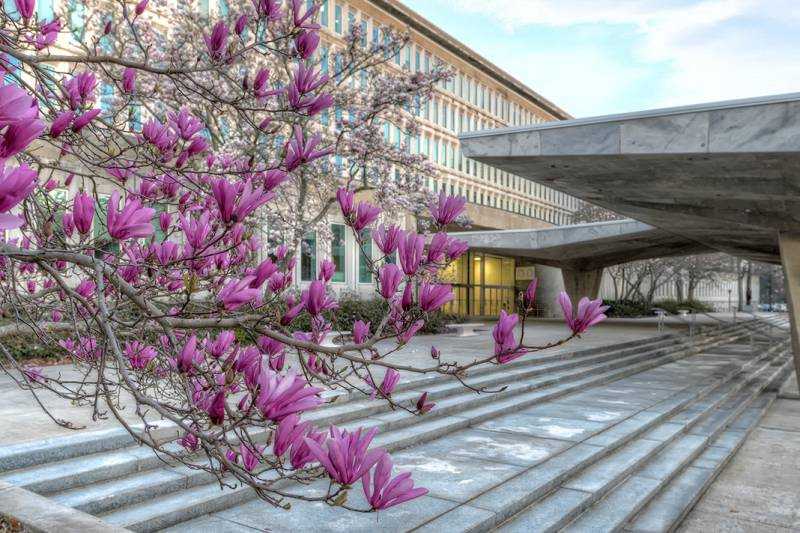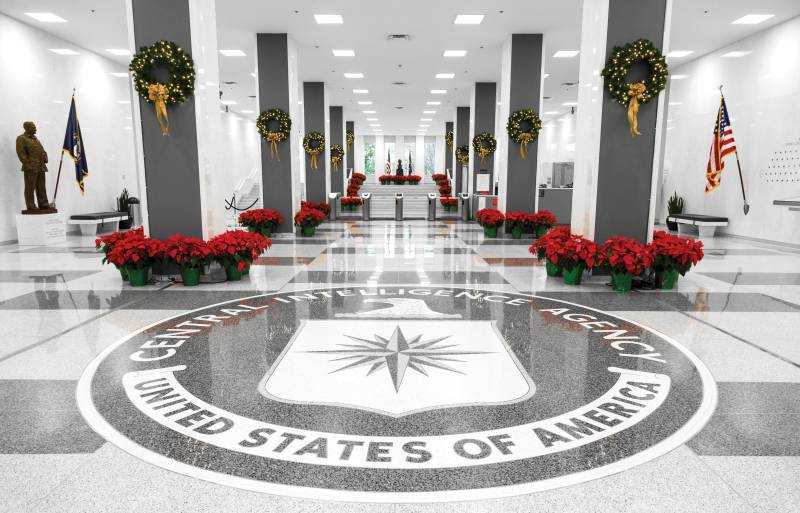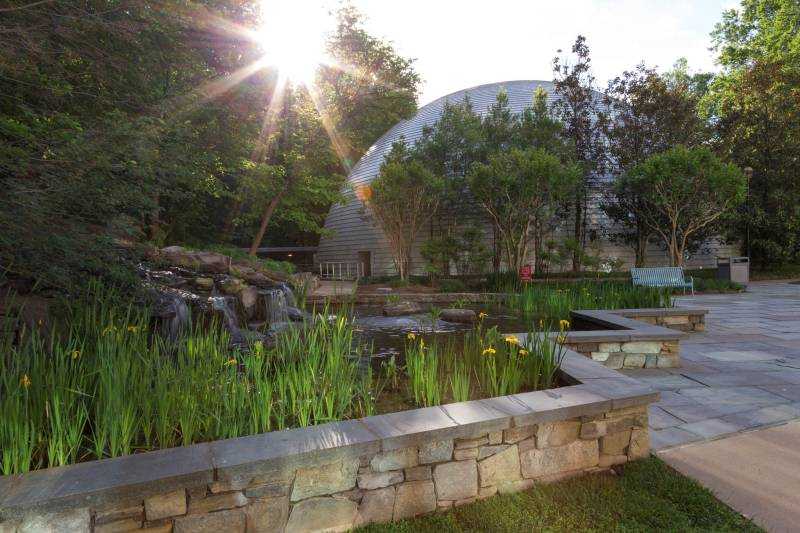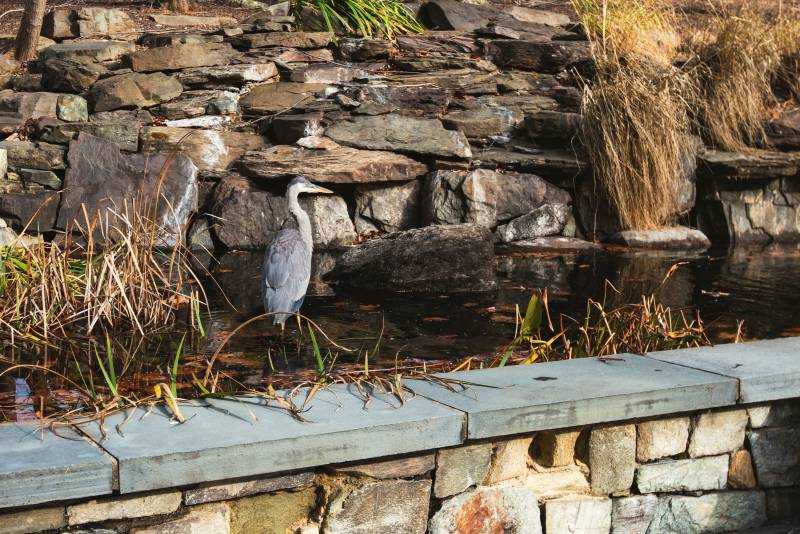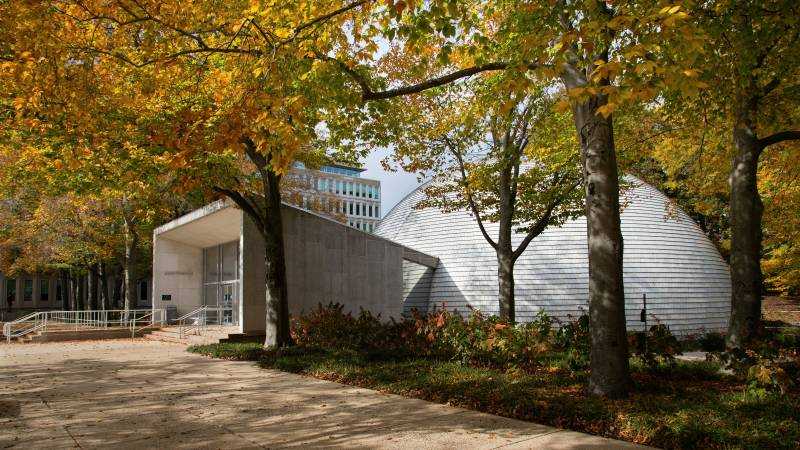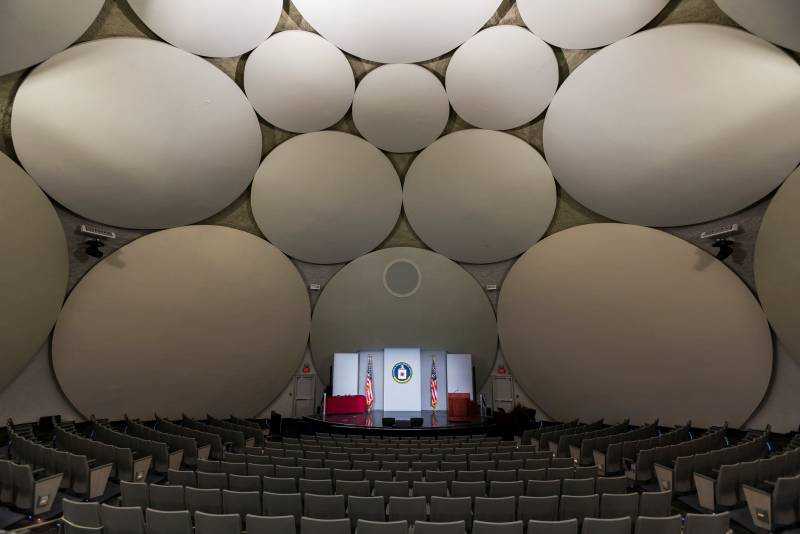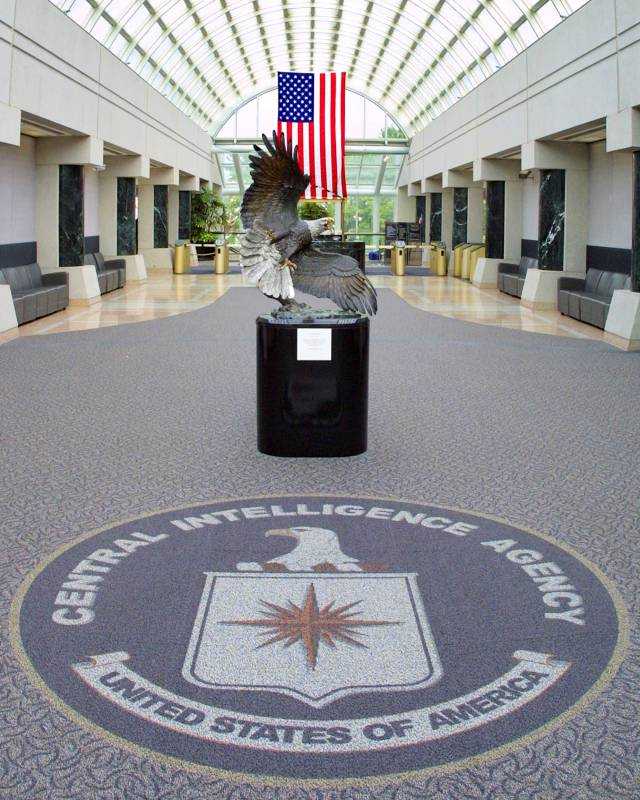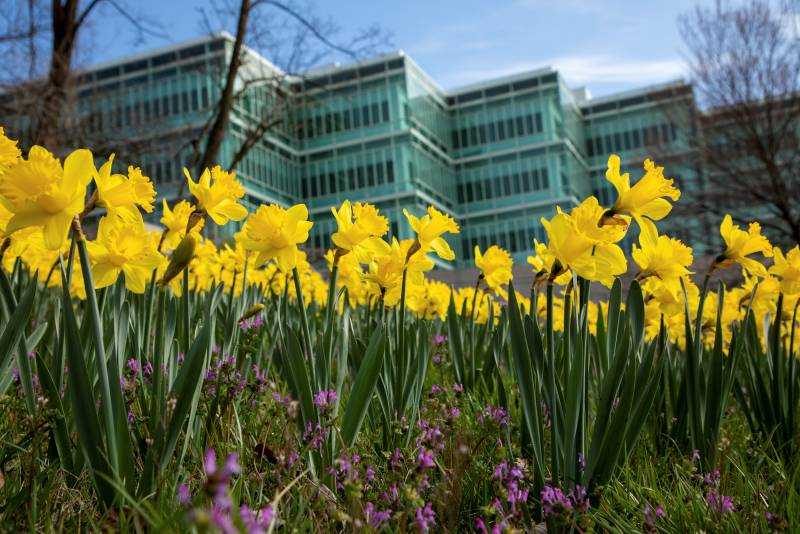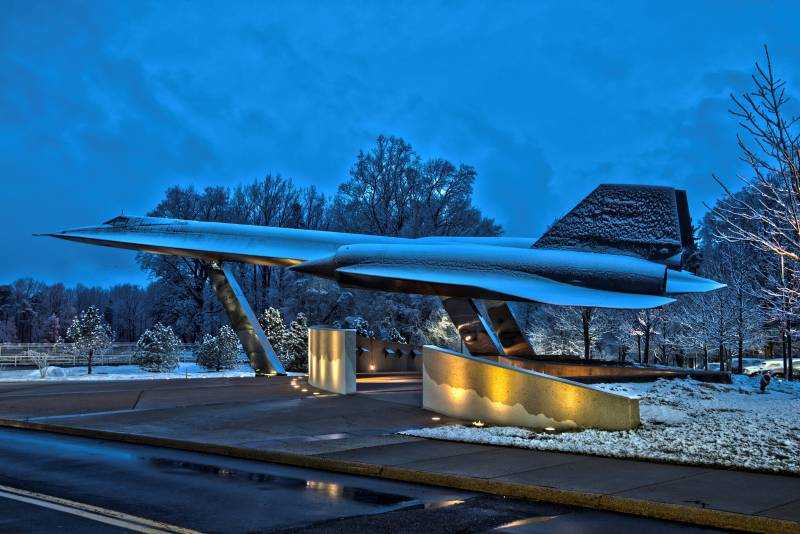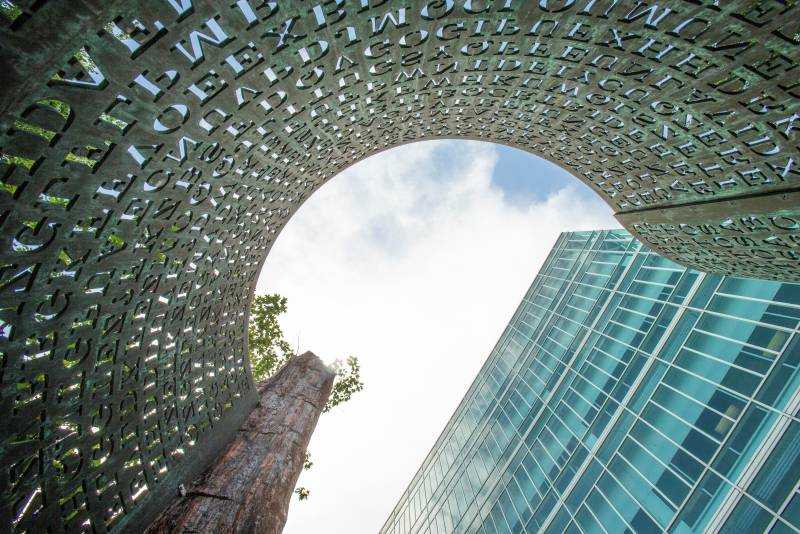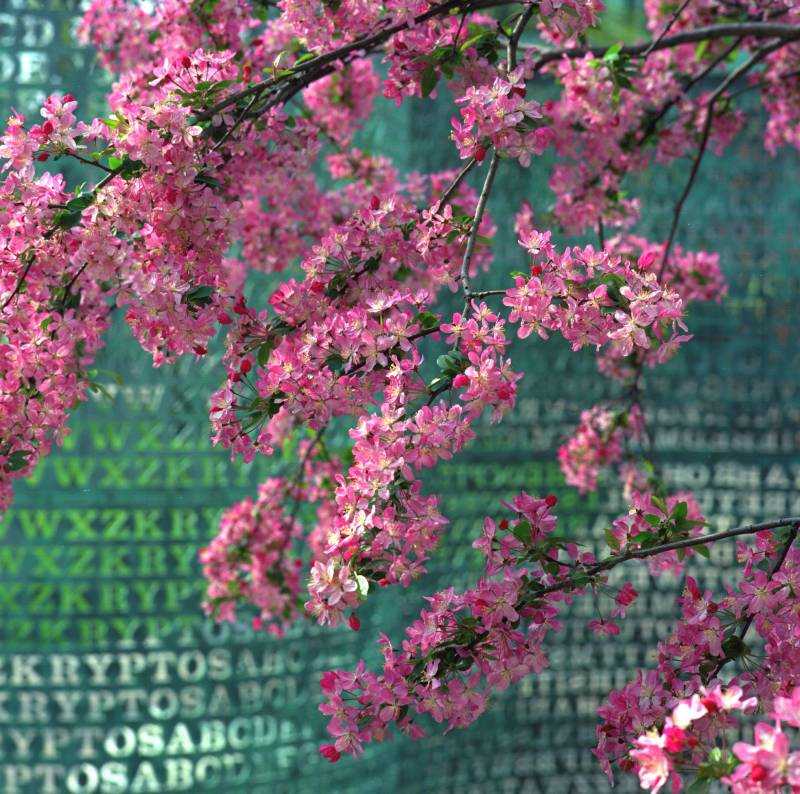A statue of Nathan Hale stands outside the Agency Auditorium entrance. Hale was the first American executed for spying for his country. This statue is a copy of the original work created in 1914 for Yale University, Nathan Hale’s alma mater. The Agency’s statue was erected on the grounds in 1973, 200 years after his graduation from Yale.
There is no known portrait of Nathan Hale; this life-size statue portrays what little written description there is of him. The statue captures the spirit of the moment before his execution – a 21-year-old man prepared to meet his death for honor and country, hands and feet bound, face resolute, and his eyes on the horizon. His last words, “I regret that I have but one life to lose for my country,” circle the base around his feet.
He stands vigilant guard on the Agency and is a continuing reminder to its employees of the duties and sacrifices of an intelligence officer.
